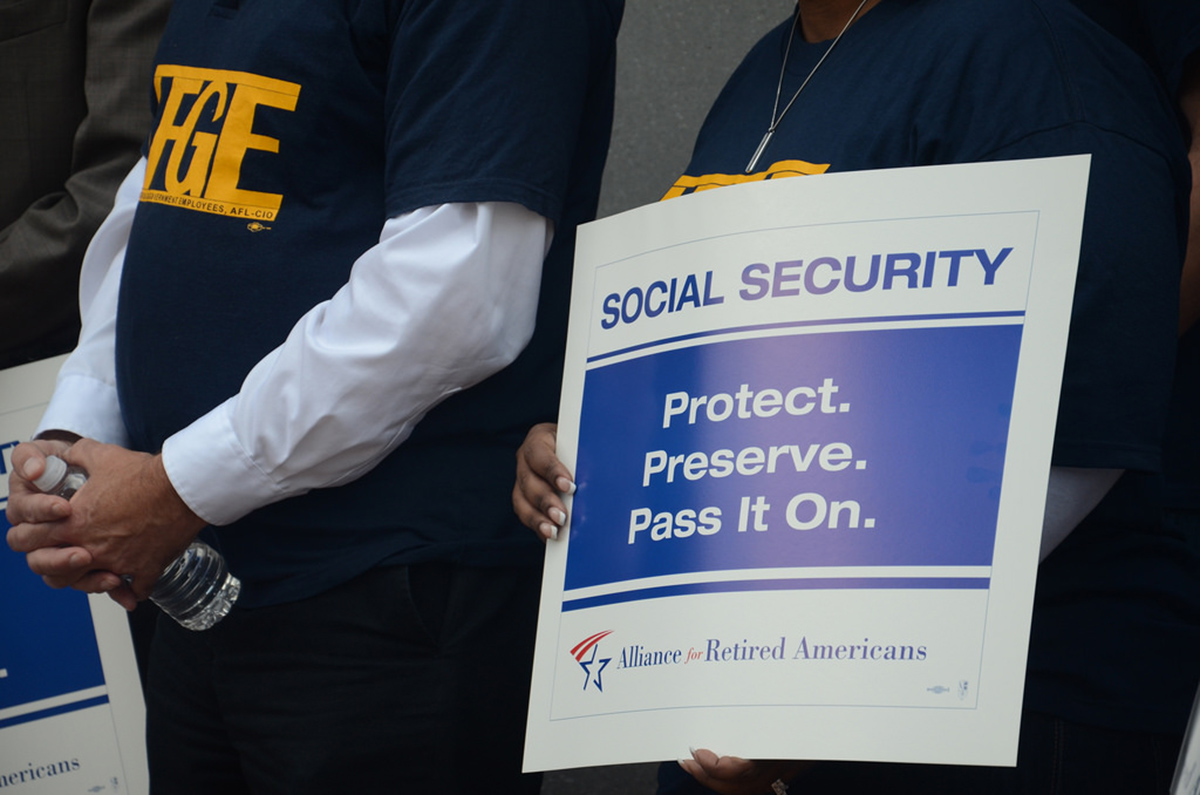Most Americans learned what they know about disability retirement from the AFLAC duck.
The hapless AFLAC duck appears in dozens of commercials that air on nearly every free channel on American television. A horrible barber, an inept yoga student, but a great break dancer (at least compared to the pigeon also starring in one ad), the AFLAC duck inserts himself in dozens of situations to remind humans that the one word they need to remember for short-term disability insurance in the United States is AFLAC, which is the duck's signature quack. Every commercial introduces Aflacts, facts about AFLAC, which provides money for living expenses beyond major medical coverage for people who are sick and need cash, provided, of course, they signed up for a policy and started paying premiums before they were sick or injured.

AFLAC is the best-known example of short-term disability insurance. In the United States, a "short-term" disability is one that interferes with work for a year or less. Policies available directly from insurance companies, from unions, and from employers promise to provide an income when sick leave runs out (or maybe even earlier), with quick payment times and relatively relaxed rules for qualifying for benefits. A roofer who breaks a leg could qualify (provided, again, insurance is purchased before the accident). In some cases, a heart attack or cancer treatment that require weeks or months off work would be covered.
Long-term disability is a different matter. To qualify for long-term disability benefits, typically you need to have a condition that will keep you out of work for a year or more. You need to qualify for disability retirement rather than for sick leave. It takes longer to prove you meet the standards for getting your pension, and the monthly payments will be much smaller, often less than $1000 a month.
If you have planned ahead, however, some options are clearly better than others.
- Private or employer-sponsored disability insurance programs usually pay the most. Qualifications for benefits are stated in the group or individual insurance policy, and are usually awarded quickly, sometimes in a month or less after medical diagnosis.
- Veterans benefits, for men and women who sustained injuries in active service in the military, may be partial or complete. A service-related injury may be rated as 0 percent, 10 percent, 30 percent, 50 percent, 70 percent, or 100 percent disabling, with corresponding amounts of disability payments. The Veterans Administration recognizes that injured service members may be 100 percent disabled for a short time, and gradually recover. Unlike the Social Security Administration, the VA does not award benefits on an all or nothing basis. Approval is usually slow, but there are multiple ways in which the VA supports military families.
- Social Security benefits are hard to get. The rules for Social Security disability eligibility are arcane, unfairly applied, and incredibly complicated. Most applicants are turned down at least once or twice, and awards can take years. Social Security, however, is the only disability insurance most Americans can even apply for.
Upping The Likelihood Of Approval For Medical Disability Benefits From Social Security

- If you develop disabling diabetic complications because you cannot afford the insulin your doctor prescribed, you are deemed not to have cooperated with your treatment. If you develop disabling diabetic complications because you cannot see the insulin level in your syringe, then you may be disabled.
- If you have a heart attack and get a bypass or a stent, the Social Security Administration usually will assume that your treatment cured your disability and you are not disabled, unless there is clear evidence to the contrary, such as failing a stress test.
- If you suffer a series of disabilities for which you get treatment, for instance, you have a heart attack and get a stent, you have a stroke and you get rehab, you develop cancer and you respond to chemotherapy, each illness lasting less than a year, your application may be rejected on the grounds that your illnesses are "serious but not disabling."
- The Social Security rules allow for expedited payments to people who are given less than six months to live. However, if the Social Security Administration has taken more than six months to process your claim and you are still alive, it may be rejected. If you had died, it would reject your claim on the grounds that you have to be alive to be disabled.
- Establish a track record of doing everything your doctor tells you to do, or documenting why you don't.
- Make sure the Social Security Administration has access to all your medical records.
- Keep every appointment (usually by phone) with every Social Security Administration examiner involved in your case, and don't neglect to go to any examinations scheduled with their doctors.
What Are Your Chances of Being Approved for Social Security Disability Insurance?

- Every year over two million American workers apply for SSDI. In 2013, there were 2,327,840 applicants. The following numbers are from the 2013 statistics.
- Nearly one-third of applications (31 percent, or 714,778 of the 2,327,840 total) were rejected as incomplete before they were even considered by an examiner. This could be because medical records were missing, someone other than the disabled person filed the application without documented authority, the applicant had not worked long enough or paid enough quarters, the applicant had earned too much money during the application period and was found to have engaged in "substantial gainful employment," or there were simply errors in the application that the applicant did not correct after being asked.
- More than two-thirds of applications survive the first round of review and go to the "initial application stage." At this point an examiner looks at the record to determine whether the applicant can (or does) still work, how serious the disability is, whether the impairment meets the criteria of the Social Security Administration's List of Impairments, whether the applicant can still do his or her old job, and whether the applicant is, at the time the application is being examined, able to do a new job. Any one of these five factors can be disqualifying. Only 37.9 percent of applications are approved by Social Security Administration examiners. Of the rejected applicants, 48.2 percent request an appeal.
- The next step of appeal is to the applicant's state disability determination service. At this point, the only new information that can be presented is medical. State disability examiners only approve about 9 percent of applications on the basis of new medical evidence. They reject 91 percent.
- Only 18 percent of remaining applicants, just 77,359 disability seekers in 2013, take the next step and ask for a hearing before an administrative law judge (ALJ). The judge looks at the totality of the file and determines whether the law has been followed. A few judges notoriously accept 90 percent of claims. Others reject 90 percent of claims. Nationwide, about 35 percent of applicants are successful before the ALJ, usually when the Social Security Administration has made a series of legal errors or there is overwhelming medical evidence in the case. However, it is possible simply to get a "bad judge." In that case, the next step, by now usually two to four years after the initial application, is to file with the Appeals Council, a panel of judges who look at the whole case but usually only reverse a decision if the ALJ has made an error in interpreting the law.
- Only about 20 percent of cases reviewed by the Appeals Council, in a process that takes up to a year, are sent back to the ALJ with instructions to reverse an error, to grant disability payments. However, these claimants can go to the US Court of Appeals, if a matter of an error in the application of the law is not corrected by the Appeals Council. At this point, if there has been no error in the judge's understanding of the law, stated in terms of the law, the case will not even be heard. However, when the problem is a "bad judge" and the applicant has a lawyer and appeals to the Court of Appeals, the applicant wins about 80 perdent of the time. In 2013 just 62,986 people out of over two million initial applicants persisted this long.
- David A, Morton, III, M.D. The Nolo Guide to Getting and Keeping Your Social Security Disability Benefits. Nolo Press. 2014
- Photo courtesy of me and the sysop via Flickr: www.flickr.com/photos/pyxopotamus/2150043533
- Photo courtesy of AFGE via Flickr: www.flickr.com/photos/afge/15236306437
- Photo courtesy of Joe Gratz via Flickr: www.flickr.com/photos/joegratz/117048243
- Infographic by Steadyhealth


Your thoughts on this